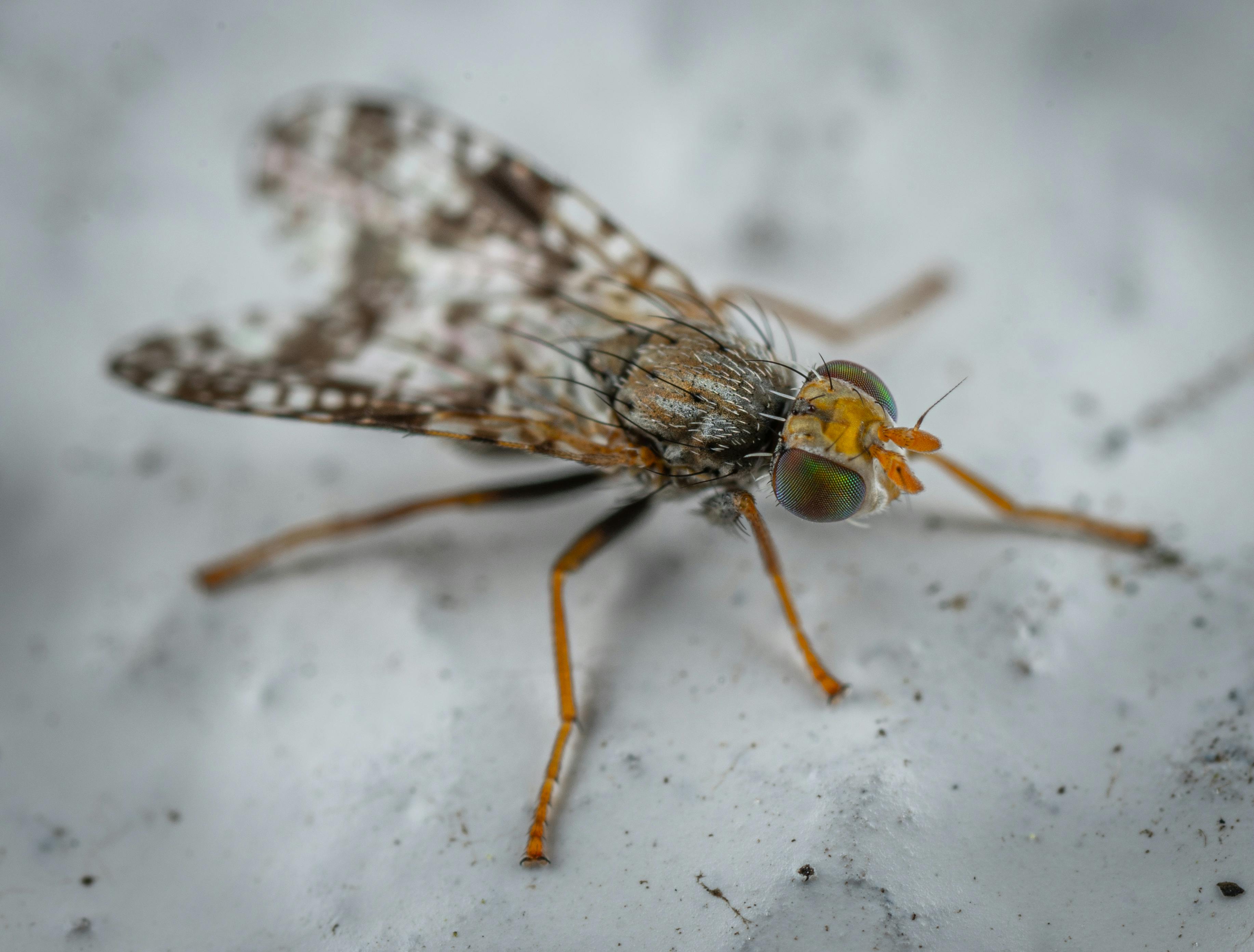Are Fruit Flies Gnats? The answer to this question is both yes and no. Fruit flies are a type of small fly, and gnats are also a type of small fly. So, although they belong to the same family of insects, there are some differences between the two. In this article, we will discuss how fruit flies and gnats differ from each other and why they are often confused.No, fruit flies and gnats are not the same thing. Fruit flies are small, flying insects that are attracted to ripe or decaying fruit. Gnats, on the other hand, are small flying insects that feed on plant sap and can be found hovering around houseplants.
What is a Fruit Fly?
Fruit flies are tiny, flying insects that belong to the Drosophilidae family. They are also known as vinegar flies due to their attraction to fermented fruits and other materials. They vary in color from light brown to black and usually measure between 1/16 and 1/8 of an inch in length. The wings of fruit flies are clear with darker veins running through them.
Fruit flies feed on decaying fruit, rotting vegetables, and other organic matter that may be found in kitchens or other parts of the home. They can also be attracted to sweet-smelling substances such as perfume, lotion, and even shampoo. Female fruit flies lay their eggs near these sources of food.
Fruit flies are a nuisance because they can transmit bacteria such as E. coli and Salmonella from place to place. They can also contaminate food sources with their excrement, leading to potential health risks for humans who consume the affected food items.
In order to prevent infestations, it is important to keep kitchens and other areas around the home clean by regularly disposing of trash and wiping down surfaces that may be prone to attracting fruit flies, such as countertops or sinks. It is also important to check drains for blockages or standing water that could be a breeding ground for these insects.
It is possible to control fruit fly populations using traps or insecticides specifically designed for this purpose; however, it is best to consult a professional pest control service if the problem persists or becomes severe.
What is a Gnat?
A gnat is a small insect belonging to the order Diptera. These tiny creatures are usually black or gray in color and measure only a few millimeters in length. They have two wings, long antennae, and six legs. Gnats typically live in damp environments and feed on plant nectar, fruit juices, and the excretions of other insects. Some species of gnats are considered pests due to their ability to spread disease-causing bacteria or damage crops. While most gnats do not bite humans, some species may do so if provoked.
Gnats are related to mosquitoes and houseflies, but they are much smaller than either of these insects. They are often confused with fruit flies, which have shorter antennae and different feeding habits than gnats. Despite their size, gnats can travel long distances in search of food or mates. In some cases, they can even fly hundreds of miles in a single day!
Are There Different Types of Gnats?
Gnats are small flying insects that can be found in a variety of habitats. They are generally seen in large numbers and can be a nuisance in both outdoor and indoor settings. While there are many types of gnats, they all belong to the Diptera family, which includes flies, midges, and mosquitoes. The most common types of gnats that can be found in many parts of the world include fruit flies, fungus gnats, eye gnats, drain flies, and sand gnats.
Fruit flies are small flying insects that feed on decaying fruits and vegetables. They lay their eggs on these surfaces and the larvae develop within days. Fungus gnats feed on decaying organic matter such as fungi or soil-dwelling organisms. They are usually found near water sources or damp areas with organic matter buildup. Eye gnats feed on the eye secretions of animals such as cows and horses which is why they’re commonly found near livestock.
Drain flies have a characteristic moth-like appearance and breed in slimy organic matters like sewage drains or decaying food particles inside kitchen sinks or drains. Sand gnats live mainly near the beach where they feed on other small insects such as moths and ants which makes them very important to the ecosystem near coastal areas.
Identifying different types of gnats is difficult because they all look very similar in size and coloration. However, by examining their habits and habitats one can easily distinguish between them. Generally speaking, most species of gnat prefer warm moist environments to lay their eggs so it’s important to keep these areas clean to prevent an infestation from happening in your home or yard.
Fruit Flies and Gnats
Fruit flies and gnats are two different types of insects that can often be mistaken for one another. Although they may appear similar, there are several key differences that can help you distinguish between the two. Fruit flies are typically smaller than gnats, measuring about 1/8” in length, while gnats are generally around 1/16”-1/8” in length. Fruit flies also have red eyes while gnats have black eyes. Additionally, fruit flies tend to be more attracted to ripened and fermenting fruits and vegetables than gnats, which may be found near damp areas such as bathrooms, kitchens and drains. Finally, fruit flies usually have an oval shape while gnats tend to be more slender in appearance with a pointed head.
By taking the time to observe the size and color of their eyes as well as the shape of their bodies, you can easily tell the difference between fruit flies and gnats. Knowing which type of insect you’re dealing with will help you identify how to best manage them in your home or garden.

Fruit Flies and Gnats Have Similar Habits
Fruit flies and gnats are both small, flying insects that share many of the same habits. Both are attracted to food sources, especially over-ripe and rotting fruit. Fruit flies and gnats will often lay their eggs in these decaying materials, which become a food source for their larvae. They are also attracted to standing water, where they can lay eggs and reproduce. Both species of insects can be found in both indoor and outdoor environments, such as kitchens and gardens.
Fruit flies and gnats both feed on a wide range of foods, including fruits, vegetables, fungi, bacteria, yeasts, sugars, and other organic matter. They commonly feed on the sugary liquids that can be found in fermenting foods or drinks. As such, they can be found in places where food is stored or prepared in large quantities. Fruit flies have even been known to feed on the blood of mammals when other food sources are scarce!
It is important to note that although fruit flies and gnats share many similar habits, there are some differences between them. For example, fruit flies have red eyes whereas gnats have black eyes. Additionally, fruit flies typically live for only about 30 days while gnats can live for up to three weeks. Finally, fruit flies tend to reproduce much more quickly than gnats do; a single female fruit fly can lay hundreds of eggs over her lifetime!
Overall, while there may be some differences between them, it is clear that fruit flies and gnats share many similar habits when it comes to food sources and reproduction patterns. If you find either species in your home or garden then it is important to take steps towards controlling their populations so that they do not become a nuisance or cause damage to your property.
Where Do Fruit Flies and Gnats Live?
Fruit flies and gnats are two common pests found in a variety of environments. Fruit flies typically live in areas where ripe fruit or vegetables are present. This includes kitchens, garbage cans, fruit bowls, and compost bins. Gnats are more commonly found in damp and moist environments such as drains, sinks, and potted plants. They are also attracted to light so can often be seen hovering around windows or outdoor lights.
Fruit flies can lay up to 500 eggs at a time and the larvae feed on decaying organic matter like fruits and vegetables. Gnat larvae feed on fungi, algae, bacteria, root hairs, pollen grains, seeds, decaying plant matter, and other microscopic organisms found in soil or water.
Both fruit flies and gnats have short life cycles of about 8-10 days from egg to adulthood. This short life cycle allows them to reproduce quickly making them difficult to control if not properly addressed.
It is important to remove any ripe fruits or vegetables from your kitchen as soon as possible to reduce the potential for an infestation of fruit flies or gnats. Additionally keep sinks clean and dry as much as possible to prevent gnat infestations. If you find yourself dealing with a pest problem it is best to contact a professional exterminator who is experienced in dealing with these types of pests.
Getting Rid of Fruit Flies and Gnats
Fruit flies and gnats can be a nuisance in the home. They can come from a variety of sources, such as houseplants, over-ripe fruits and vegetables, and standing water. There are several methods for getting rid of these pests, including traps, chemical sprays, and natural repellents.
Traps are one of the easiest and most effective ways to get rid of fruit flies and gnats. One method is to place a shallow dish filled with apple cider vinegar near areas where you have seen the pests. The vinegar will attract the fruit flies or gnats, but they won’t be able to escape because the sides are too slippery. Another trap uses a piece of paper rolled into a funnel shape and placed in a jar filled with sweet liquid such as honey or liquid soap. The pests will crawl into the funnel-shaped paper but won’t be able to escape.
Chemical sprays can also help get rid of fruit flies and gnats. These products typically contain insecticides that kill on contact. Always read and follow all instructions on the label before using any insecticide product.
Finally, there are natural repellents that can help keep these pests away from your home. Citrus peels placed near doorways or windowsills can act as natural repellents for both fruit flies and gnats. Herbs such as basil, lavender, mint, thyme, and rosemary also work well for keeping these pests away from your home.

Conclusion
Fruit flies and gnats are both small, flying insects that can be easily found in the home. Although fruit flies and gnats are often confused because of their similar size and habitat, they belong to different insect families. Fruit flies are associated with fermented foods while gnats feed on microorganisms in damp, organic material. In conclusion, although fruit flies and gnats look alike, they are two distinct species that require different strategies to control their populations.
Understanding the difference between fruit flies and gnats is important for effective pest control. With proper knowledge of the life cycles and habits of these insects, homeowners can effectively eliminate both from their homes.


